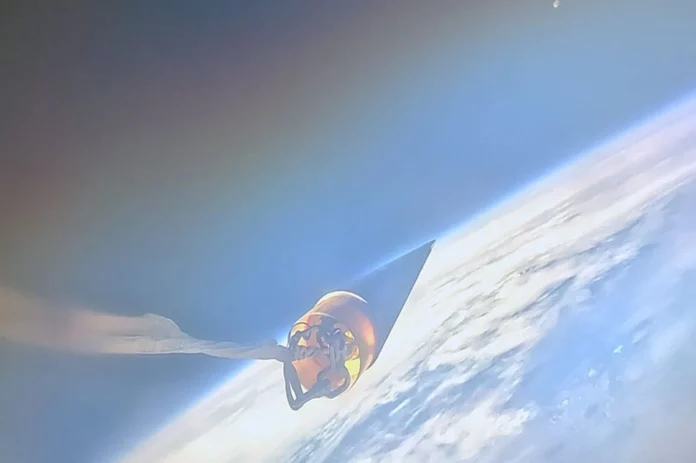A group of students broke the record for the highest altitude reached by a self-designed and built suborbital rocket by lifting Aftershock II to 470,000 feet (143,256 meters) above the Earth’s surface.
The University of Southern California Rocket Propulsion Laboratory (USCRPL) designed and built the Aftershock II, and on October 20, launched the rocket from a launch pad in the Black Rock Desert in Nevada. The Aftershock II reached a speed of 5,283 feet per second (1,610 meters per second) and a Mach 5.5 speed, and became the first non-governmental or private rocket to reach such a long distance in space.
The previous record holder was a rocket designed and built by the Civil Space Exploration Team, which launched in 2014 and reached an altitude of 380,000 feet (115,825 meters). The student-built Aftershock II rocket broke this record by 90,000 feet (27,432 meters).
This is not the first time USCRPL students have broken world records. In 2019, the group became the first student organization to launch a rocket beyond the Karman Line, the boundary between Earth’s atmosphere and outer space that runs about 62 miles (100 km) above the planet’s surface. For context, the new rocket, Aftershock II, reached a maximum altitude of 89 miles (143.3 km).
“Since its founding 20 years ago, the UCLA Rocket Propulsion Laboratory has made the aspirations and visions of space for countless undergraduate students from all engineering disciplines a reality,” said Yannis Yortsos, dean of the UCLA Viterbi School of Engineering, in a statement. “It’s exciting to see them break not only their previous world student record by reaching the Karman Line in 2019, but also the record of any amateur team in history. This extraordinary group of students shows how one can imagine what can be done in the lab and how to make it a reality.”
To reach new heights, the students improved upon their original Traveler IV rocket design. At 13 feet (3.9 meters) tall, the Aftershock II was equipped with a new avionics unit and improved security and data integration. The missile also received a thermal protection system with new paint and titanium fins, which increased its endurance at hypersonic speeds. “To exceed the standard we set for ourselves with Traveler IV, we had to solve many technical and operational challenges,” said Ryan Kremer, USCRPL lead engineer and undergraduate mechanical engineering student. “Thermal protection at hypersonic speeds is a major challenge at the industrial level, and the protective coating system we developed has proven to be a great success, allowing the rocket to return virtually unscathed.”
The group of students was determined not only to break their own record, but also to reach new heights that had never been achieved by an independent group before. “This is an extremely ambitious project, not only for a student team, but for any non-professional group of rocket engineers,” said Dan Erwin, chair of the UCLA Department of Astronautical Engineering, in a statement.
As the private industry continues to grow, it is encouraging to see an independent group of aspiring rocket engineers striving to reach new heights on their own.









